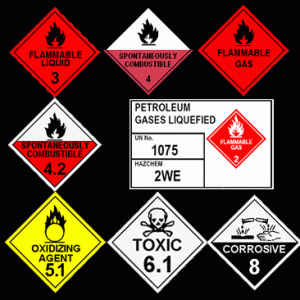
WorkSafe in the Northern Territory released a safety bulletin to ensure that all drivers and operators that are transporting dangerous goods there are aware of the classifications and what is required in terms of legislation.
This is an excerpt from the full bulletin at http://www.worksafe.nt.gov.au/:
This bulletin provides information on the transport of explosives on NT roads, in particular licensing and vehicle requirements.
Classification of explosives
Explosives are classified using the United Nations’ system for the transport of dangerous goods. In this system:
– most explosives are classified as dangerous goods of Class 1.
– Class 1 is subdivided into six Divisions which are 1.1, 1.2, 1.3, 1.4, 1.5 and 1.6.
– each division is also assigned any of thirteen Compatibility Group letters which are A, B, C, D, E, F, G, H, J, K, L, N and S.
This system of Classification and Compatibility Groups is designed to explain which explosives are compatible for transport and is also used for storage and handling. See the 3rd edition Australian Explosives Code for a detailed explanation of the Divisions and Compatibility Groups.
The more common explosives used commercially are Class 1.1, 1.3, 1.4 and 1.5 and the more common Compatibility Groups associated with these classes are B, C, D, G and S. Examples of these are:
– detonators may be classified as Class 1.1B, 1.4B, 1.4S;
– commercial blasting explosives may be classified as 1.1D, 1.5D;
– fireworks may be classified as 1.3G, 1.4G;
– propellant used in ammunition may be classified as 1.1C or 1.3C; and
– ammunition may be classified as 1.4S.
Drivers and vehicle licence requirements
The AEC3 categorises explosives by type and quantity into three risk categories that are applied to the loads of explosives on a vehicle (Table 1). The inherent risk of the explosives being carried increases with each risk category, as do the requirements.
The AEC3 can be downloaded at no cost from the Safe Work Australia website by navigating to Publications,
National Codes of Practice.
Driver and vehicle licences are required for the transport of explosives where they are transported in risk category 3 quantities.
Source:http://www.worksafe.nt.gov.au/Bulletins/IndustrySectors/Transport and Storage/04.01.05.pdf
Download the full bulletin especially if you are a driver or operator that works even part of the time in the Northern Territory.
Apart from the fact there are hefty fines for people working in the chain of responsibility for not strictly adhering to regulations of this kind, there can be horrendous implications for drivers, road users and potentially emergency crews if care isn’t taken when transporting dangerous goods of any kind.



